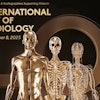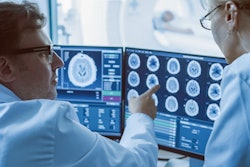
You heard it here first -- the death knell of the CD as a medium for exchanging images may finally be at hand. A presenter at last week's Society for Imaging Informatics in Medicine (SIIM) described how they implemented cloud-based image exchange built into their electronic health record (EHR).
And the benefits of doing this are legion, ranging from streamlining workflow by eliminating CDs and avoiding multiple logins across diverse applications as providers search for the correct patient to reducing the loading of unnecessary images into the local PACS, said presenter Stacie Barnard of the University of Rochester Medical Center in New York.
"Through an integrated application in the Epic electronic health record [we installed], nearly 2,000 providers at 308 connected facilities, hospitals, large health systems, medical vendors, and research facilities across the U.S. in an expanding medical network are able to link in context to the imaging exchange platform without leaving the patient's chart," she told session attendees. "They can then view imaging, associated clinical data, and diagnostic reports at any time and from any mobile device or computer."
Last year, the medical center integrated Nuance Communications' PowerShare cloud-based platform into its Epic electronic medical record system in order to help providers access and share external radiology, cardiology, and trauma images electronically rather than uploading them from CDs.
"Efficiency was our main goal," Barnard said. "Making providers go outside the electronic health record to search for images is inefficient and frustrating, and uploading images from CDs is time-consuming. Some computers don't even have CD drives anymore."
Center IT staff embedded the PowerShare platform into the imaging tab of patient charts so that providers may now just click the button that will bring them into an image exchange process that automatically authenticates their credentials. For an initial trial of the experiment, Barnard's team uploaded 147,000 studies to the platform and shared 88,000 of them.
"Once they've selected the images they want to see, they can interact with patients for image review, order follow-up exams, nominate the study to the local PACS if radiology needs to compare it to a new study or offer a second read, or close and continue reporting," she said.
Barnard did acknowledge that although the image sharing integration has its benefits, it also has its challenges: The center is still seeing an increase in external studies loaded into its PACS -- from 60,522 per year in 2019 to 71,977 per year in 2021. She hypothesized that perhaps it's too easy for referring physicians to add studies, and she underscored the need for more discussion with them.
But overall, response to the image share platform has been positive, even from the C-suite. Barnard shared feedback received from the center's chief medical information officer, Dr. Gregg Nicandri.
"This is a game changer for physician workflows, especially specialties that interact with a lot of outside images," Nicandri said. "In the past, we would have to log into a separate system, remember a unique log on, find the patient by knowing date of birth and name spelling, and wait for the images to load. Having PowerShare directly in the electronic health record allows us to get to the images in one click and frees up valuable time for direct patient care that used to be wasted searching for images."
What's next? Eliminate CD burning and enable Epic's MyChart patient portal to handle images.
"We now have teams testing integration into the patient portal," she said. "If a patient needs to bring images to one of their providers, it's no longer a CD but a push to PowerCare. They log in, click on the imaging tab in MyChart, and get instructions [on how to proceed]."



















